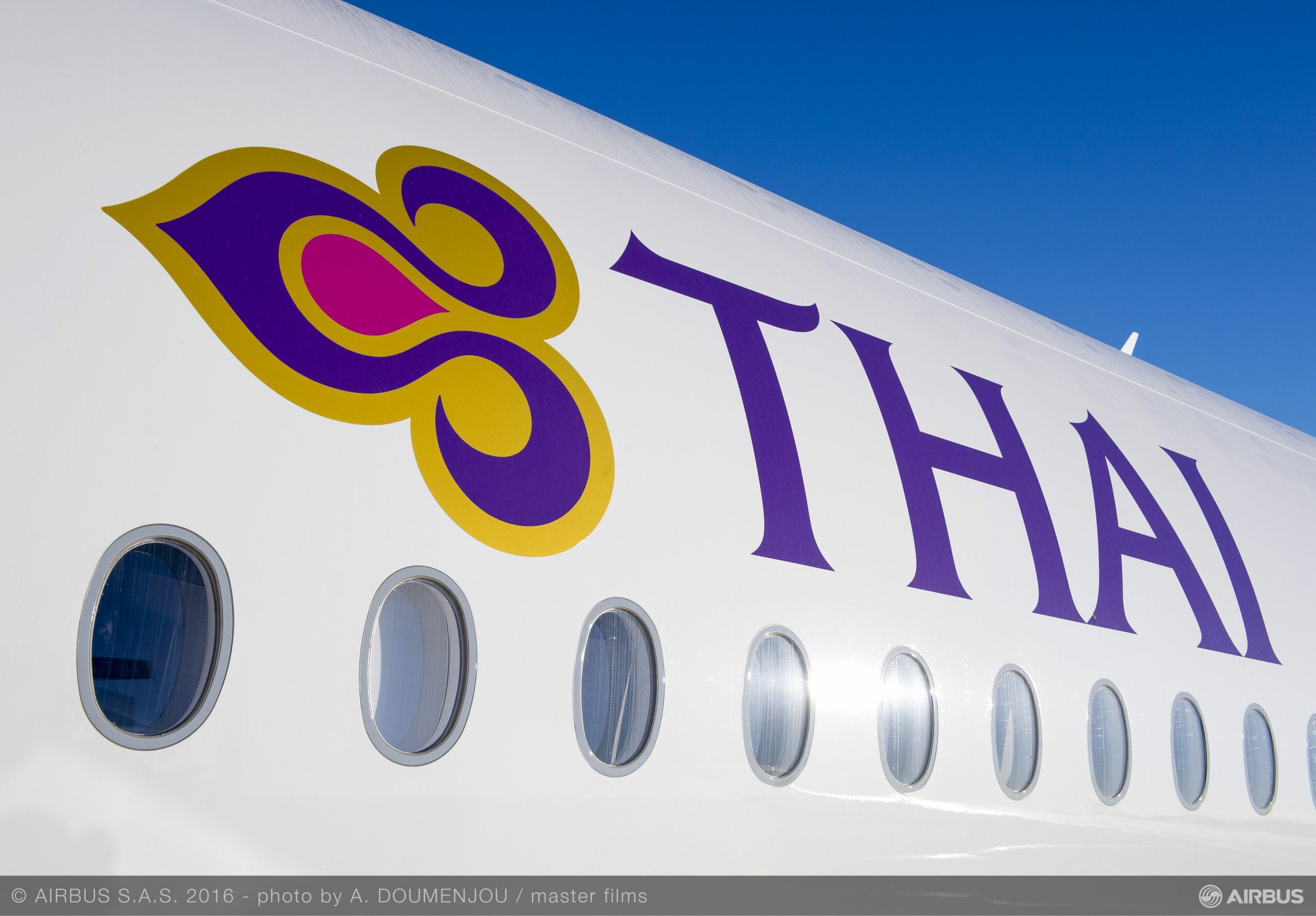
First A350 XWB delivery to THAI 8 scaled
Troubled flag carrier Thai Airways will have to wait for another two months before it knows if it can continue as a restructured and smaller airline or will go bust. In early May, a creditor’s meeting under the supervision of president Chansin Treenuchagron is scheduled to discuss the final version of the airline’s rehabilitation plan, which was submitted to the government on March 2.
Thai Airways has been loss-making since 2013, but the Covid-crisis has exacerbated the situation as it was deprived of its long-haul network, a situation seen at competing airlines in the Asian region. After grounding its fleet on March 25, 2020, it resumed limited international and charter flights in August and by December 31 served 58 destinations in thirty countries. Subsidiary Thai Smile Airways initially ceased operations in March 2020, but has resumed some limited services from June and operated to fourteen destinations in six countries and on ten domestic routes by the end of last year.
The carrier ended 2020 with a Bt 141 billion loss. An auditor’s report says Thai Airways Group has “significant liabilities in excess of current assets” of Bt 281.8 billion (the airline Bt 278.8) and a capital deficiency of Bt 128.6 billion (the airline Bt 127.2 billion). Last Spring, Thai applied for government-guaranteed loans, but the government instead decided that the airline would be better of by restructuring and resizing. The Central Bankruptcy Court in Bangkok accepted the rehabilitation petition on May 27, placing Thai Airways in a default position of outstanding liabilities. The completion of the rehabilitation plan was delayed a number of times but had to be submitted on the final date of March 2. Through the Ministry of Finance, the Thai government is the biggest shareholder with 47.86 percent while the remaining shares are with four Thai banks.
Slide from a December presentation that explains the rehabilitation plan.
A decision from the government and creditors is now expected in May. (Thai Airways)
The restructuring plan now up for a decision includes a drastic reduction in staff, which in two separate rounds would result in the loss of some 6.500 jobs. Including redundancies since Spring 2020, the resized Thai Airways will have 15.000 fewer staff.
The smaller airline will have a smaller fleet. The current fleet includes 61 aircraft, but only nine are in active service while all six Airbus A380s, fifteen A330s, eight out of twelve A350s, fifteen out of twenty Boeing 777s, and all eight 787s have been parked. Thai Smile Airways subleased twenty A320ceo’s from the parent airline, of which eight are currently in storage. Rehabilitation plan documents say the carrier had a combined fleet of 103 aircraft, of which 33 were owned (value Bt 3.9 billion) and seventy leased. It has no unfilled orders with Airbus or Boeing.
In October, Thai has offered 34 aircraft for sale, including ten previously retired 747-400s, eighteen 777s, three retired 737-400s, three retired A340-500s, six retired A340-600s, one retired A300-600, and two A380s. The company took a Bt 3.151 billion impairment on ‘non-performing’ aircraft and spare parts. In January, reports emerged that all A380s will be offered for sale, which will be most difficult in a market that is overcrowded by second-hand double-deckers from Air France, Lufthansa, Singapore Airlines, Malaysia Airlines, and Hi Fly.
As Thai reduces its costs, at the same time it aims to reduce its debts (including unsecured debentures of BT 71 billion and lease liabilities of Bt 123 billion) and bolster its liquidity position. The company hopes to raise some Bt 30 billion in fresh cash by the middle of this year, followed by another Bt 20 billion in the next two years. First, it will have to get approval from its creditors on repayment obligations and terms before it can attract new funding.
Slide from December depicting the changes Thai Airways hopes to compete with the rehabilitation plan. (Thai Airways)
Thai Airways, established in 1960 as a joint-venture with SAS until 1977, has always been renowned for its high-class service. The rehabilitation plan clearly outlines its wish to continue as a premium carrier, with a smaller but profitable network, new (digital) revenue ideas, lean operations including a leased fleet. In a June presentation, Thai said it might seek new business partners to form joint-ventures.
Views: 15





